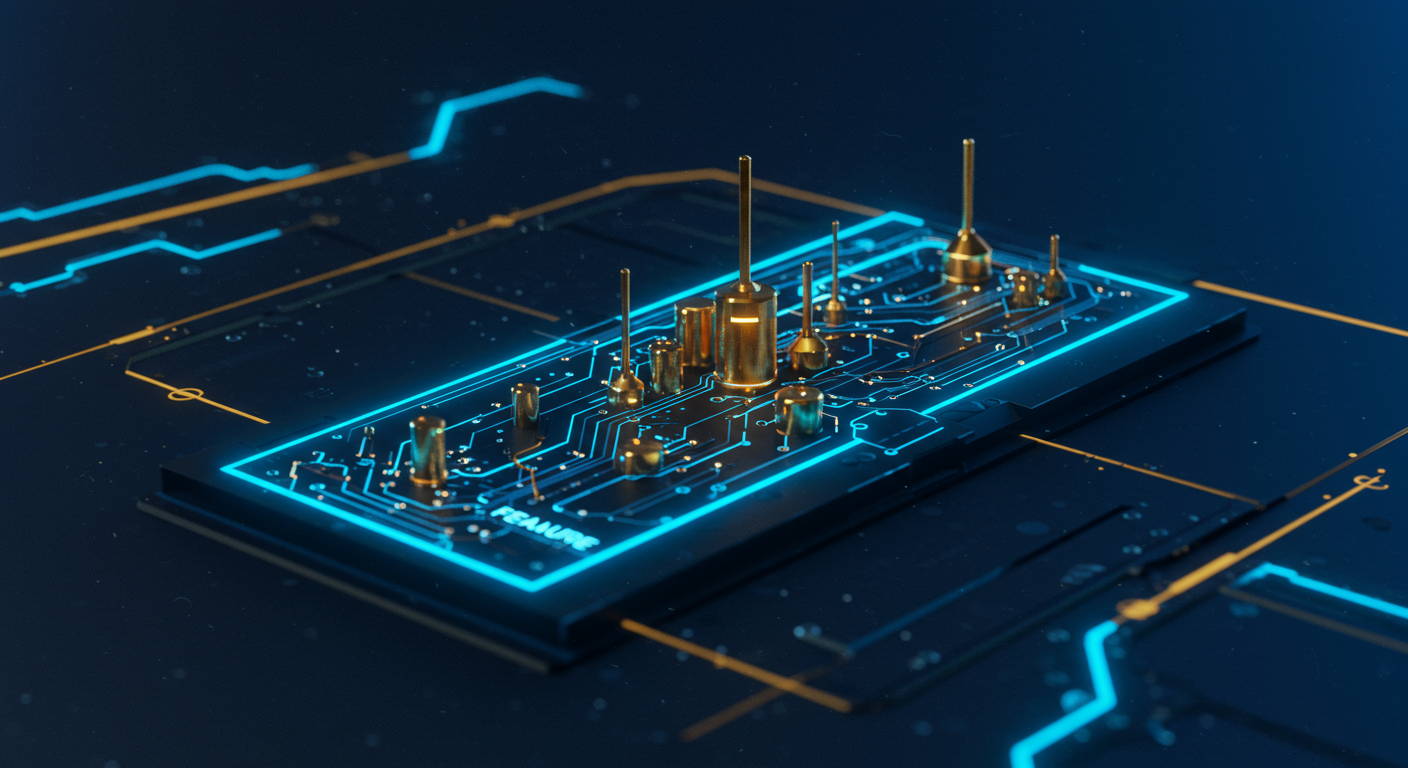Amazon Bedrock Pricing Demystified: A Chatbot Builder's Guide to Cost Optimization

Decoding Amazon Bedrock Pricing: A Practical Guide for Chatbot Builders
Amazon Bedrock, a fully managed service offering a choice of high-performing foundation models (FMs) from leading AI companies, is increasingly popular for building AI-powered chatbots, but its pricing can be a source of confusion.
Bedrock Basics for Chatbot Development
Amazon Bedrock simplifies AI development by providing access to various FMs, eliminating infrastructure management. It's especially useful for creating sophisticated conversational AI applications like chatbots.
The Pricing Puzzle
Bedrock's pricing model presents unique challenges:
- Per-token pricing: Cost depends on the number of input and output tokens processed. Longer conversations lead to higher expenses.
- Model-specific rates: Each FM has its own pricing tier, impacting your overall bill.
- Hidden costs: Data processing, storage, and API calls can add up quickly.
Mastering Bedrock Costs: An "Amazon Bedrock chatbot cost guide"
This guide aims to provide clarity and actionable strategies:
- Optimize prompts: Shorter, clearer prompts use fewer tokens.
- Monitor token usage: Track usage to identify cost drivers.
- Choose the right model: Select the most cost-effective model for your needs. Consider factors like latency, scalability and cost efficiency.
- Implement rate limiting: Control API calls to prevent unexpected spikes.
Ultimately, understanding these pricing intricacies is key to building sustainable and scalable chatbot solutions, and resources like Learn AI can provide a more complete picture.
It's not just about if AI can build your chatbot, but how efficiently it can be done cost-wise.
Bedrock's Core Pricing Components: On-Demand vs. Provisioned Throughput
Amazon Bedrock offers two primary pricing models: on-demand and provisioned throughput, and understanding their nuances is key to Amazon Bedrock on demand pricing vs provisioned cost optimization. Amazon Bedrock empowers chatbot builders with access to foundation models (FMs) from AI21 Labs, Anthropic (like Claude), and others.
On-Demand: Pay-As-You-Go Inference
With on-demand pricing, you pay only for what you use.
- This model bills based on the number of tokens processed during inference tasks.
- For example, if you're using a model like AI21 Studio to generate responses, you'll be charged per input and output token.
- This is similar to only paying for electricity when you turn on a light, a great fit for fluctuating usage.
Provisioned Throughput: Reserved Compute Power
Provisioned throughput is akin to reserving dedicated compute resources.
- It guarantees consistent performance by ensuring capacity is always available, reducing latency.
- Ideal for high-volume chatbots requiring immediate responses.
- Think of it like renting an entire server farm – you're paying for its constant availability.
Cost vs. Latency Trade-offs

Choosing between on-demand and provisioned depends on your chatbot's characteristics:
| Feature | On-Demand | Provisioned Throughput |
|---|---|---|
| Cost | Pay per token, potentially cheaper | Higher upfront cost, potentially wasteful |
| Latency | Variable, can fluctuate | Consistent, lower latency |
| Best For | Low-volume, unpredictable usage | High-volume, predictable, latency-sensitive use |
| Example Use Cases | Internal Q&A bot with occasional use, Marketing AI Tools](https://best-ai-tools.org/tools/category/marketing-automation) | Customer-facing support bot with high traffic, Customer Service tools |
Navigating Bedrock's pricing requires careful consideration of these two models – choose wisely to unlock maximum efficiency. Next, let's dive deeper into optimizing your model selection.
In the age of chatbots, understanding inference pricing within services like Amazon Bedrock is crucial for cost optimization. Amazon Bedrock allows users to access various foundation models (FMs) to build and deploy AI applications.
Deep Dive: Understanding Inference Pricing for Chatbots
Inference pricing in Bedrock revolves around the concept of tokens, the basic units of data processed by these models.
- Input vs. Output Tokens: You're charged for both. Input tokens represent the text you feed the model (your question), while output tokens are what the model generates in response. For example, if a user sends the prompt "Summarize the key points of this article," the prompt's tokens count as input. The resulting summary generates output tokens.
Foundation Model (FM) Cost Variance
Different FMs in Bedrock have unique token pricing.
- Model A vs. Model B: Claude might cost \$X per 1,000 tokens, while AI21 Studio could cost \$Y. This is due to model complexity, training data, and performance.
Real-World Examples
Let's say a chatbot interaction requires 50 input tokens and 150 output tokens.
| Model | Input Token Price (per 1,000) | Output Token Price (per 1,000) | Total Cost |
|---|---|---|---|
| Model X | \$0.001 | \$0.003 | \$0.005 |
| Model Y | \$0.0015 | \$0.004 | \$0.00775 |
Estimating Token Usage
Consider common chatbot tasks:
- Answering Questions: Depends on question complexity and answer length. A simple FAQ response might require fewer than 100 total tokens.
- Generating Summaries: Lengthy documents require more tokens. Experiment with short previews to find the sweet spot.
Navigating inference pricing is critical for economical chatbot deployment; thoughtful planning now will maximize the impact of your AI budget. Let’s now explore practical tools to optimize prompt lengths and reduce costs.
Fine-tuning your chatbot on Amazon Bedrock isn't the only thing you'll be budgeting for.
Beyond Inference: Exploring Other Potential Bedrock Costs

Building a chatbot with Amazon Bedrock unlocks powerful possibilities, but understanding all the potential costs is key to cost optimization. Don't just focus on inference; here's what else to consider:
- Amazon Bedrock fine tuning cost: Fine-tuning can significantly improve model performance, but it's a multi-faceted expense:
Example: Fine-tuning a Llama 3 model could involve several hundred dollars per training run, depending on the dataset size and desired epochs.
- Bedrock Agents for Orchestration: While incredibly useful for automation, Bedrock Agents also contribute to your bill. Each agent execution, especially with complex workflows involving multiple API calls, adds up. Think of it as paying for a highly efficient, tireless assistant – but an assistant nonetheless.
- Cost of data processing in Amazon Bedrock: Data ingestion and storage aren’t freebies. Bedrock charges for both the initial data upload and the ongoing storage of your datasets. Regularly review and prune unnecessary data to minimize these expenses.
- Inter-Service Dependencies: It's rare to build a chatbot in isolation. Consider the costs of associated AWS services:
In short, while calculating inference costs is crucial, don’t let other expenses catch you by surprise. Smart budgeting is the unsung hero of successful AI in practice. Now, let's look at strategies to proactively manage these costs...
Here's how you can keep those chatbot costs in check while leveraging the power of Amazon Bedrock.
Prompt Engineering: The Art of Frugality
Crafting your prompts is like composing a minimalist symphony – every note counts.- Be specific: Vague prompts lead to verbose (and expensive!) responses. For instance, instead of "Tell me about France," ask "What are three must-see landmarks in Paris?"
- Context is key: Provide just enough information to guide the model without overwhelming it.
- Limit response length: Explicitly state the desired length (e.g., "in under 50 words").
Provisioned Throughput: The Bulk Discount
If your chatbot anticipates high and consistent usage, provisioned throughput is your friend. This involves committing to a specific level of performance for a set duration. While it requires upfront investment, it can significantly reduce the cost per token compared to on-demand pricing. Consider this:| Pricing Model | Use Case | Cost Efficiency |
|---|---|---|
| On-Demand | Low, sporadic usage | Low |
| Provisioned Throughput | High, consistent, predictable usage | High |
Model Quantization and Optimization
Model quantization is akin to compressing an image – reducing its size without losing too much detail. Techniques like quantization and distillation can make models smaller and faster, reducing processing costs.Monitoring and Analysis: Know Thy Spending
Use CloudWatch metrics and cost allocation tags to track your Bedrock usage. Identify which features or prompts are driving up costs, and then optimize accordingly. This approach aligns with the "measure twice, cut once" principle of software development.In essence, Amazon Bedrock cost optimization techniques aren't about restricting your chatbot’s potential, but rather about smart resource allocation; want to know more about efficient AI implementations? Delve into our guide on AI in Practice for further reading!
Forget about sticker shock – let's get practical about managing your Amazon Bedrock costs.
Practical Tools for Estimating and Managing Your Bedrock Budget
Amazon Bedrock Cost Calculator Tools
Before diving into building that cutting-edge chatbot, it's wise to estimate the potential costs. Thankfully, there are several 'Amazon Bedrock cost calculator tools' available. While Amazon doesn't offer an official one, third-party options provide estimates based on usage patterns and selected models. For example, consider using a general AI Cost Calculator for ballpark estimates by setting custom token costs based on Bedrock's pricing tiers. These tools allow you to input anticipated usage (tokens processed, inference requests, etc.) to get a handle on potential expenses.
AWS Budgets and Cost Explorer
AWS provides robust tools to monitor and manage your overall AWS spending, which includes Amazon Bedrock.
AWS Budgets lets you set custom budgets and receive alerts when your spending exceeds defined thresholds. This is critical for preventing surprise bills.
Cost Explorer allows you to visualize your AWS usage data, filter specifically for Bedrock, and identify potential cost optimization opportunities. For example, you could analyze costs per model to identify which are most economical for specific tasks.
Community-Built Tools and Resources
The open-source community often steps in to fill gaps. Look for community-developed tools for detailed cost analysis and optimization. For example, developers actively building on Github often share cost optimization tips. A custom dashboard is powerful way to create your very own Amazon Bedrock cost calculator.
Building a Custom Amazon Bedrock Cost Dashboard
Creating a custom dashboard allows for granular cost tracking tailored to your application. This involves pulling cost data from AWS Cost Explorer via the API, processing it, and visualizing it using tools like Grafana or Tableau. You can track costs by:
- Model used
- Time period
- Specific features utilized
Managing your Amazon Bedrock budget effectively requires a combination of estimation, proactive monitoring, and a bit of DIY ingenuity; now, let’s move into more specific cost optimization techniques.
Amazon Bedrock's pricing model, while potentially powerful, can feel like navigating a quantum physics textbook; let's break it down relative to the competition.
Bedrock vs. the Competition: A Cost Comparison for Chatbot Development
When crafting chatbots, cost-effectiveness hinges on several factors, not just headline prices. Let's peek under the hood comparing Amazon Bedrock to alternatives like OpenAI, Google AI Platform (Vertex AI), and Azure AI. Keep in mind these prices can change rapidly, it is best to check them directly at the source.
- Pricing Structures: Bedrock offers both on-demand and provisioned throughput options, providing flexibility. OpenAI leans heavily on per-token pricing. Vertex AI offers both pay-as-you-go and custom pricing. Azure AI offers consumption-based pricing, reserving capacity, and enterprise agreement options.
- Cost Strengths and Weaknesses: Bedrock excels with its variety of models, but that choice can complicate cost prediction. OpenAI's simplicity is a strength, but costs can balloon with complex chatbot flows.
- Specific Scenarios:
Head-to-head cost comparison: Bedrock vs. OpenAI for chatbots
For a chatbot performing simple tasks, OpenAI's ChatGPT could be initially cheaper because of its cost per token pricing, however, when you move to a more advanced chatbot that leverages a larger more costly model, Amazon Bedrock becomes a better deal. The key is understanding your chatbot's resource use. You should use a tool like LLM Price Check to understand and estimate what the cost might be.
Ultimately, the value of Bedrock (or any platform) rests on a blend of features, performance, and cost. Choosing the right foundation models is key when trying to optimize your Conversational AI Tools. Next, we'll cover how to effectively monitor and manage your Bedrock costs to avoid any surprises.
Sure thing! Let's predict the future of Amazon Bedrock pricing – buckle up.
Future Trends in Amazon Bedrock Pricing and Chatbot Development
Amazon Bedrock, currently a flexible service for accessing various Foundation Models, is poised for some exciting changes in its pricing and capabilities. Expect more options for chatbot developers aiming for cost-effectiveness.
Potential Pricing Model Evolution
The "future of Amazon Bedrock pricing" is likely to see:- Tiered Pricing: Imagine introductory tiers for startups, scaling up to enterprise-level commitments with volume discounts. This could democratize access even further.
- Granular Usage Metrics: Instead of broad usage buckets, expect more detailed tracking of tokens, inference time, and feature utilization for precise cost optimization.
- Spot Instances for AI: Similar to EC2, the introduction of spot pricing for less critical chatbot tasks could lead to significant savings.
AI Model Advancements & Cost Impacts
New foundation models directly affect chatbot costs:- Model Efficiency: Newer models like Anthropic Claude 37 Sonnet are becoming more efficient, processing the same amount of information with fewer tokens, thus lowering costs. This model is known for its speed and intelligence, making it suitable for enterprise applications.
- Specialized Models: Expect models fine-tuned for specific tasks (e.g., customer service, content generation). Using a Design AI Tools for visual chatbot design will be more cost-effective than a general-purpose model.
- Quantization & Compression: Advances in model compression techniques will reduce the memory footprint and computational requirements, leading to lower inference costs.
Emerging Cost-Effective Architectures
Chatbot architectures are evolving to minimize expenses.- Hybrid Architectures: Combining smaller, faster models for routine tasks with larger models for complex queries could optimize costs.
- Edge Deployment: Deploying parts of the chatbot logic closer to users can reduce latency and cloud costs.
- Prompt Engineering Optimization: Fine-tuning prompts for clarity and conciseness, as covered in our Prompt Engineering learning section, directly reduces token consumption and costs.
Mastering Amazon Bedrock's pricing structure is your compass for navigating the chatbot-building landscape.
Key Takeaways: Bedrock on a Budget
- We've journeyed through the intricacies of Amazon Bedrock pricing, a service allowing you to access various foundation models from a single API.
- Remember the critical distinction between on-demand and provisioned throughput, carefully weighing your workload needs.
- Pay close attention to factors impacting costs, like model selection, input/output token volume, and image generation resolution. These can significantly impact the budget, impacting your project's success.
Optimize or Sink
"Understanding and optimizing Bedrock costs is no longer optional; it's essential for building sustainable chatbot applications in today's competitive landscape."
- The cost of deploying a chatbot can vary significantly based on these factors, impacting your bot’s overall viability.
- Optimization techniques like prompt engineering, data compression, and careful model selection are your secret weapons.
- Don't forget that many of these services offer tiers suitable for AI enthusiasts, making them a worthwhile option for experimenting.
Embrace the Experiment
Dive into Amazon Bedrock, explore its diverse pricing models, and experiment with optimization techniques. We’re not just talking theory here; roll up your sleeves and build. Sign up for our newsletter to stay ahead of the curve with actionable tips and exclusive pricing guides.
Keywords
Amazon Bedrock pricing, Bedrock pricing model, cost of Bedrock chatbot, Bedrock cost optimization, serverless AI pricing, Generative AI cost, Bedrock inference pricing, Bedrock training pricing, Bedrock free tier, AWS AI pricing, Bedrock vs SageMaker pricing, chatbot cost calculator
Hashtags
#AmazonBedrock #AIPricing #ChatbotCost #ServerlessAI #GenerativeAI
Recommended AI tools
ChatGPT
Conversational AI
AI research, productivity, and conversation—smarter thinking, deeper insights.
Sora
Video Generation
Create stunning, realistic videos and audio from text, images, or video—remix and collaborate with Sora, OpenAI’s advanced generative video app.
Google Gemini
Conversational AI
Your everyday Google AI assistant for creativity, research, and productivity
Perplexity
Search & Discovery
Clear answers from reliable sources, powered by AI.
DeepSeek
Conversational AI
Efficient open-weight AI models for advanced reasoning and research
Freepik AI Image Generator
Image Generation
Generate on-brand AI images from text, sketches, or photos—fast, realistic, and ready for commercial use.
About the Author

Written by
Dr. William Bobos
Dr. William Bobos (known as 'Dr. Bob') is a long-time AI expert focused on practical evaluations of AI tools and frameworks. He frequently tests new releases, reads academic papers, and tracks industry news to translate breakthroughs into real-world use. At Best AI Tools, he curates clear, actionable insights for builders, researchers, and decision-makers.
More from Dr.

